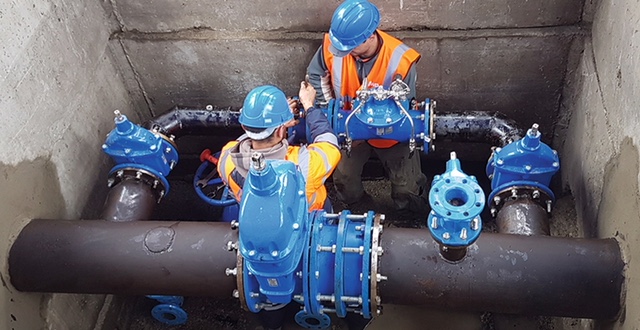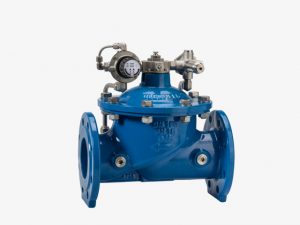On average, every third liter of water produced worldwide is lost somewhere in distribution; a waste of a vital resource, and of the amount of energy consumed and hard work invested in its production. Water services are challenged by aspects such as growth in population, increased water demands and restrictions on energy consumption. Any reduction of water losses will therefore help avert water shortage, free resources and indirectly reduce the consumption of energy – creating benefits for the network, its end-users and for the environment altogether.
Valuable overview
Reducing water losses would require vast insight into what is actually going on within the distribution network. Where exactly is water lost? How to manage? Where to set in first? – a comprehensive task, as some networks cover massive areas, sometimes transporting water hundreds of kilometres before it reaches its customer. Trying to manage processes here would be time-consuming, offering delayed information and extended reaction spans.
Therefore, dividing the network into smaller sections (district metered areas, or DMAs) is an ideal strategy for obtaining an overview of the total network activities, making it possible to start thinking in smart, advanced ways of managing network processes.
Demand-driven management
For network optimization, it is important to focus on what is actually necessary; for example, there is no point in wasting energy on maintaining the same high pressure in the network during night-time and off-peak hours, as has been defined for daytime where the water consumption is higher. Furthermore, there is a direct saving in lowering water pressure as it will decrease the overall leakage rate, and it will protect the pipe system from a high, fluctuating pressure which will eventually wear out the pipe system and cause ruptures. Therefore, the aim should be to manage pressure within each network section, keeping it at a minimum without affecting the customers’ needs. But how to effectively balance these shifting demands
By adding a timer and two operating pilots, an AVK pressure reducing valve is able to handle the varying needs, thus lowering the pressure in off-peak hours to a pre-defined low. This way it is possible to make operational adjustments based on collected network data – a process which can be further optimized through response to real-time demand, using a smart, solenoid solution.
Smart, real-time adjustments
An AVK intelligent control valve is a pressure reducing valve with an added controller. It has the ability to receive data from a number of inputs and can operate itself accordingly based on inputs of flow, pressure, network losses, temperature, open/close position and maintenance requirements. It contributes to a smart water network by providing optimized network pressures, reacting to system failures, reducing leakage, and by giving feedback on valve position, water temperature, quality and valve maintenance status.
The entire system will then be responsive to real-time data, offering you the advantages of a smart water network; an integrated set of products, solutions and systems that enables you to remotely and continuously monitor and diagnose problems, prioritize and manage maintenance issues and use data to optimize all aspects of the water distribution network – not only saving resources and efforts, but also ensuring an overall improvement of network performance.
Learn more about water loss, DMA network strategy and smart water management on avkvalves.com/gain-knowledge and find information about recent projects and solutions from all over the world











